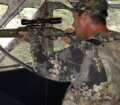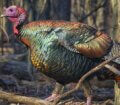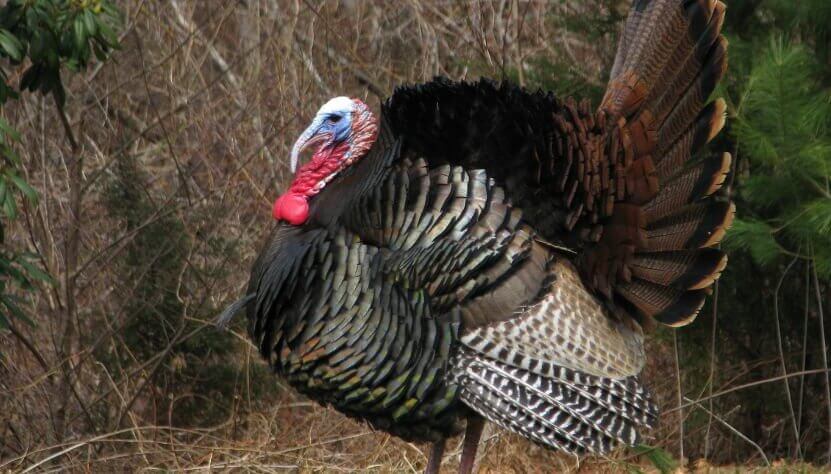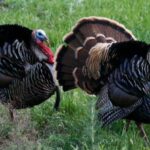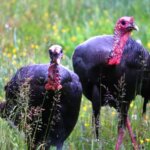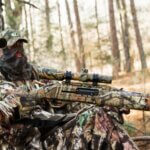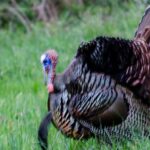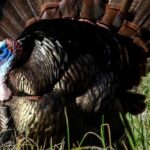Editor’s Note: From a Google survey, I’ve learned what hunters want to know about hunting turkeys. Many of them never have turkey hunted before, and others have called longbeards but have specific turkey-hunting problems they don’t know how to solve. First a hunter needs to understand that each gobbler he or she hunts is an individual bird with his own traits, hunter experiences and survival instincts. So, no one answer will answer all turkey hunters’ questions for each turkey-hunting situation. If you have turkey-hunting questions you need possible answers for, email john7185@gmail.com, and John will try to help.
What Chokes and Ammo to Use to Hunt Turkeys:
Question: What chokes do you use for turkey hunting?
John E. Phillips: The shotgun choke that gets the most attention is a full or an extra-full choke because a turkey hunter may want to harvest a bird as far away from his stand as he can shoot accurately. However, if you’re a good hunter, you should be able to take a gobbler at 30 or 40 yards and will prefer a modified choke.
The choke you choose to turkey hunt with also depends on the type of ammunition. The most popular load right now is TTS. It’s extremely effective at longer ranges and shoots a smaller shot size (often a No. 9 shot) to give a much-denser pattern than a No. 4 or a No. 6 does. However, this depends on how you want to hunt a turkey and the gauge of your shotgun. A friend of mine who’s very successful at harvesting gobblers each season shoots a 2.75-inch, 12-gauge shotgun shell with No. 5s. He says, “If I can’t get a gobbler to come within 30-40 yards of my stand, he wins the game, and I lose.” I have another friend who shoots a .410 shotgun for turkeys using TTS ammunition and limits-out on turkeys almost every year. Another friend shoots a 12-gauge Magnum with TTS ammunition No. 9 shot and takes turkeys at 50 and 60 yards.
The good news about turkey hunting is that you can determine how you want to play the game. For example, you can hold your shot until you can get the gobbler within 20-40 yards and then take him. You also can bag a gobbler that’s at 50 or 60 yards with a 3-inch, 12-gauge Magnum – if you use a full or an extra-full choke. The bottom line on chokes is that the best choke for you can be determined by how close you’ll let the gobbler come to you before you take the shot, what type of shotshell you want to shoot, and what gauge of shotgun you want to shoot.
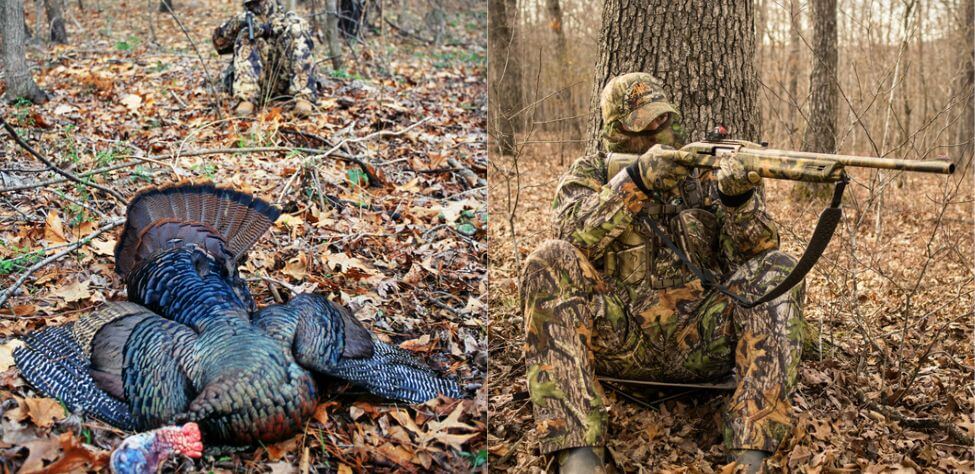
How to Set-Up to Hunt Turkeys:
Question: When turkey hunting, where should I sit?
John E. Phillips: This is a very-important question because turkeys can see and hear much better than hunters can. When I hear a turkey gobble, before I answer him, I look for a place where I can sit down and ready for my shot before I call to him again. A gobbler still in the tree may sound further away from you than he actually is when he’s gobbling. But if he turns around on the limb and gobbles straight at you, he may be closer than you’ve thought. So, before I answer a gobbling turkey, I look for the trunk of a tree that’s wider than my shoulders and possibly has some brush in front of it. Then I can break-up my silhouette when the gobbler comes closer. I’ll cut small brush or tree limbs with my pruning shears in front of me and still have plenty of openings through which to shoot. As I move through the woods, I’m always looking for trees that I can sit in front of when the turkey comes in to me. If I know where the turkey’s roosting, and I want to get close to him in the dark, then once I decide that I’m within 100-150 yards of the bird, I look for a place to sit in front of a big tree with some brush in front of it.
The worst situation I’ve ever had to deal with was one time when I was walking down a logging road, yelped and heard a turkey gobble just over a small hill in front of me. I had nowhere to run or hide before I felt certain the turkey would see me. I laid flat on that road with my shotgun aimed in the direction of the turkey. In less than 30 seconds, I saw that gobbler 15 yards in front of me, on top of a little hill with a baseball-bat-sized tree hiding his head and neck. Time seemed to pass so slowly that I felt like I’d been laying in that road for a month before the turkey stepped out. Once I could see his head and neck, I then squeezed the trigger.
What I’ve learned from veteran turkey hunters is to always look first for a set-up place to take a turkey. You never know how fast they’ll come to you before you have to make the shot. My first rule of thumb in looking for a place to sit once again is to search for a tree with a trunk broader than my shoulders and have some brush within about 5-10 feet in front of me.
Tomorrow: How to Take a Non Gobbling Turkey
Expert Guidebooks on Turkey Hunting
How to Hunt Turkeys with World Champion Preston Pittman
“How to Hunt Turkeys with World Champion Preston Pittman” and “The 10 Sins of Turkey Hunting with Preston Pittman” are books that will teach you how to call turkeys with various turkey calls and turkey sounds and give you some of Pittman’s out-of-the-box ideas about how to hunt turkeys more successfully. The Kindle version of “How to Hunt Turkeys” contains 49 bonus videos about how Preston Pittman hunts wild turkeys.
VERSIONS: KINDLE, AUDIBLE, & PRINT
The 10 Sins of Turkey Hunting with Preston Pittman
“How to Hunt Turkeys with World Champion Preston Pittman” and “The 10 Sins of Turkey Hunting with Preston Pittman” are books that will teach you how to call turkeys with various turkey calls and turkey sounds and give you some of Pittman’s out-of-the-box ideas about how to hunt turkeys more successfully. The Kindle version of “How to Hunt Turkeys” contains 49 bonus videos about how Preston Pittman hunts wild turkeys.
KINDLE ONLY
13 Wild Turkey Recipes You Can’t Live Without
This work includes tried-and-true recipes for preparing wild turkeys that are delicious to eat, hormone-free, low in cholesterol and free from preservatives.
KINDLE ONLY
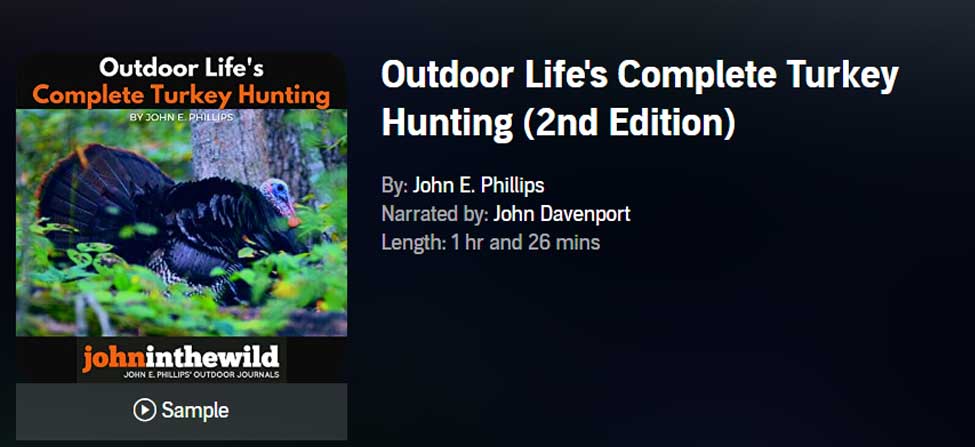
This Audible book will help you learn how to call turkeys with two of the nation’s best, longtime and well-known turkey callers, Rob Keck, formerly with the National Wild Turkey Federation, and Lovett Williams, a wildlife biologist who recorded wild turkeys giving the calls that you’ll learn how to make on various types of turkey callers.
VERSIONS: AUDIBLE & KINDLE

